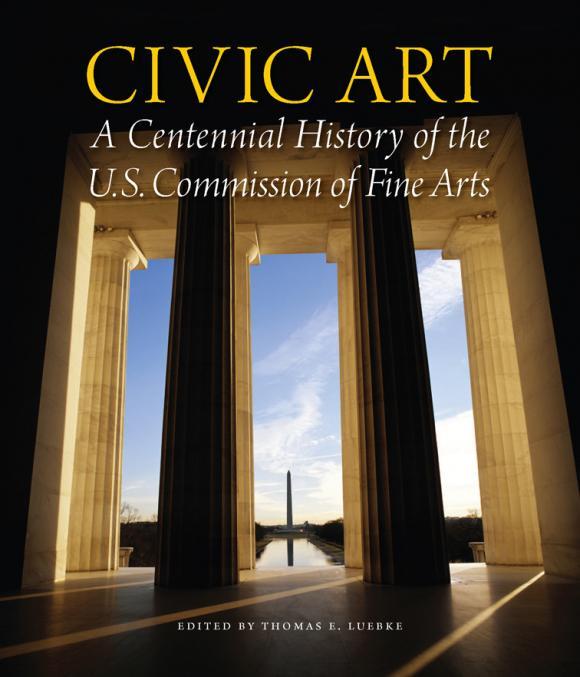
A richly illustrated volume documenting a century of efforts to beautify the nation's capital
Now Available from the University of Massachusetts Press
See reviews in the Washington Post, the Washington Business Journal, the Art Libraries Society of North America, and Choice Reviews Online.
Edited by Thomas Luebke
From an incomplete composition of brick buildings and informal gardens into an ordered landscape of white classical temples, the image of Washington, D.C., was transformed by visionary planning and herculean implementation in response to the political and artistic movements of the early twentieth century. The U.S. Commission of Fine Arts was created by Congress in 1910 as an independent design review agency to guide the ongoing work of representing national ideals in the design of the capital city.
This comprehensive history explores the evolving role of the Commission of Fine Arts in the context of the artistic, social, and political circumstances that fostered the commission's creation and the subsequent trends that have informed its decisions. As design philosophies and styles changed over the century, the commission also shifted its emphasis—from Beaux-Arts architecture and planning principles to the modernist pragmatism of midcentury, the urban redevelopment and historicist trends of the late twentieth century, and to the contemporary era characterized by issues of security, sustainability, and information technology. Organized chronologically by the periods of the commission's leadership, this illustrated book includes original essays by William B. Bushong, Arleyn Levee, Zachary Schrag, Pamela Scott, Carroll William Westfall, and Richard Guy Wilson.
Civic Art: A Centennial History of the U.S. Commission of Fine Arts provides many glimpses of the fractious, inspired, and often messy process that defines democracy in action in Washington, as revealed in the work of the commission since 1910.
"The important work of the Commission of Fine Arts touches on questions of politics, design, urban planning, environmental planning, architectural history, and cultural history. While its work primarily concerns Washington, D.C., the capital often has served as a laboratory for what happens in the rest of the country, and this volume should appeal to both professional and lay readers interested in these varied fields."— Susan L. Klaus, author of A Modern Arcadia: Frederick Law Olmsted Jr. and the Plan for Forest Hills Gardens
Thomas Luebke has served as Secretary of the U. S. Commission of Fine Arts since 2005. He is an architect with over twenty years' experience in design, planning, and historic preservation in both public and private sectors and was the design leader in the development of the 2009 Monumental Core Framework Plan for Washington, D.C.
$85 jacketed hardcover, 636 pp., 424 color & 495 black-and-white illus.
10"X12" format, ISBN 978-0-16-089702-3
